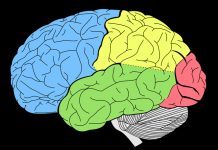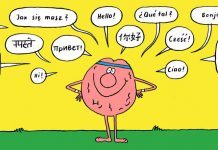Major Parts of the Brain
- Cerebrum: The cerebrum is the largest part of the brain and is divided into two hemispheres: the left and right hemispheres. It is responsible for conscious thought, perception, and voluntary movement. The cerebrum is further divided into lobes, including the frontal lobe (involved in decision-making and motor control), parietal lobe (involved in sensory processing and spatial awareness), temporal lobe (involved in auditory processing and memory), and occipital lobe (involved in visual processing).
- Cerebellum: The cerebellum is located at the base of the brain and is responsible for coordinating voluntary movement, balance, and posture.
- Brainstem: The brainstem is the lower part of the brain that connects the brain to the spinal cord. It controls many of the body’s basic functions, including breathing, heart rate, and blood pressure.
- Thalamus: The thalamus is a small structure located deep within the brain. It acts as a relay station for sensory information, sending it to the appropriate parts of the cerebrum for processing.
- Hypothalamus: The hypothalamus is located below the thalamus and is responsible for regulating a variety of bodily functions, including body temperature, hunger, thirst, and the release of hormones.
- Amygdala: The amygdala is a small almond-shaped structure located deep within the brain. It is involved in the processing and regulation of emotions, particularly fear and aggression.
- Hippocampus: The hippocampus is located in the temporal lobe and is involved in the formation and consolidation of memories.
What Part of the Brain Controls Memory
The hippocampus is the part of the brain that plays a critical role in the formation, organization, and retrieval of long-term memories. It is located in the temporal lobe and is involved in the processing and consolidation of information from short-term memory to long-term memory.
The hippocampus also plays a role in spatial navigation and has been implicated in various cognitive processes, including learning, memory, and emotion. Damage to the hippocampus can result in significant memory deficits, such as difficulty forming new memories or retrieving old ones.
what is the largest part of the brain
The largest part of the brain is the cerebrum, also known as the cortex. It is located at the top of the brain and is divided into two hemispheres: the left and right hemispheres. The cerebrum is responsible for many of the brain’s higher functions, including conscious thought, perception, and voluntary movement. It is further divided into four lobes: the frontal lobe, parietal lobe, temporal lobe, and occipital lobe.
The frontal lobe is involved in decision-making, problem-solving, and motor control. The parietal lobe is involved in sensory processing, spatial awareness, and perception of touch, pressure, temperature, and pain. The temporal lobe is involved in auditory processing, language, and memory. The occipital lobe is involved in visual processing.
The cerebrum also contains the corpus callosum, a bundle of nerve fibers that connects the two hemispheres and enables communication between them. The size and complexity of the cerebrum is one of the main factors that distinguish humans from other animals and is thought to underlie many of our unique cognitive abilities.
Primitive region of the brain function
Survival, drive, and instinct are all controlled by the primal brain (hindbrain and medulla). When your primal brain is active (sympathetic response), your modern brain is inactive.
The limbic system is the primary primitive brain network that underpins mood. It is a network of regions that collaborate to process and understand the world. Serotonin and dopamine, for example, are neurotransmitters that act as chemical messengers to send signals across the network.


















